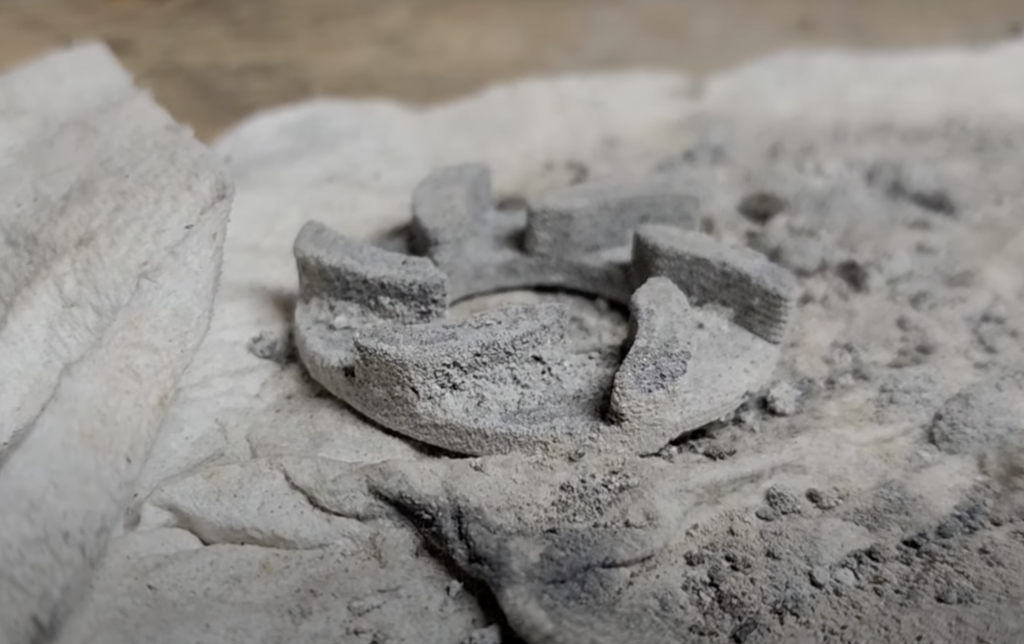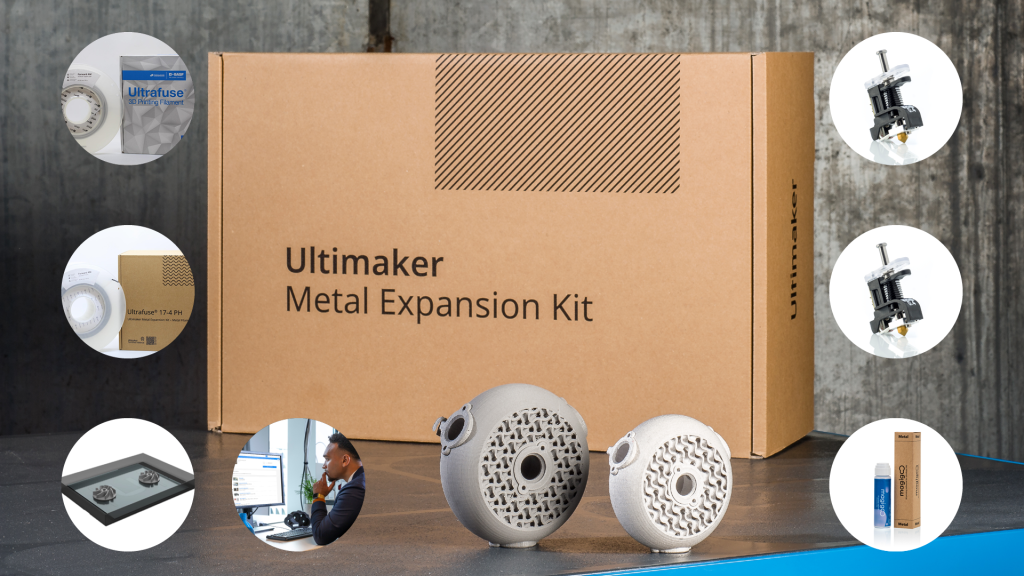Nominations for the 2022 3D Printing Industry Awards are now open. Who do you think should make the shortlists for this year’s show? Let us know by casting your vote now.
Metal filament manufacturer The Virtual Foundry has introduced a new method of debinding and sintering parts: Fused Filament Fabrication (FFF) 3D printed from alloys.
Still at a developmental stage, The Virtual Foundry’s Metal Microwave Sintering technology involves using a commercial microwave instead of a kiln or furnace to repeatedly heat prints inside a crucible. Though only tested on the firm’s own Aluminum 6061 Filamet thus far, it’s thought the process could soon offer manufacturers a faster, lower-cost means of debinding and sintering metal parts.
“Since the beginning, our quest has been to democratize metal 3D Printing,” says Bradley Woods, CEO of The Virtual Foundry. “The advent of a microwave sintering process for metal 3D prints is a tremendous shift in the momentum of this movement.”
Democratizing metal 3D printing
Established to make metal 3D printing more accessible, The Virtual Foundry was one of the first to bring workable alloys to the Fused Filament Fabrication (FFF) space with its Filamet 3D printing materials. Each of these can be printed using any open material FFF system into alloy-infused parts, which can then be post-processed into fully-dense metal objects leveraging a kiln.
The Virtual Foundry’s Filamet range includes everything from copper and iron to Stainless Steel 316L and Inconel 718 materials, all of which can be sintered at high density. Elsewhere in its portfolio, the firm also markets The Virtual Foundry Metal 3D Printer and three Virtual Foundry Sintering Kilns, but in keeping with its open philosophy, its materials can be used with most debinding and sintering gear too.
In practice, the firm has worked with the likes of NASA, Mitsubishi, and the US Department of Energy to drive the application of its technologies, which continue to gain traction in the automotive, aerospace, military, and education sectors.
The company also continues to build out its material portfolio, launching Rapid 3DShield Tungsten earlier this year, a tungsten-based radiation shielding filament. Likewise, The Virtual Foundry recently introduced an FFF Metal 3D Printing Evaluation Kit, which has everything new metal 3D printing adopters need to produce samples before sending them back to the firm for sintering and shipping.

Metal Microwave Sintering technology
As binder jet 3D printer users will already know, parts reinforced with binder must go through a debinding and sintering process before they can enter end-use. At present, this tends to involve burying prints inside a refractory ballast in a crucible, which is then placed inside a furnace or kiln and heated until the binder is burnt off.
Though conventional workflows enable the post-processing of metal 3D printed parts with a high degree of repeatability, The Virtual Foundry has now begun developing a new, more accessible approach. Instead of relying on a kiln, the firm’s technique involves inserting parts enclosed within a heating element-loaded crucible into a microwave.
Made from standard refractory material lined with silicon carbide, these ‘microwave kilns’ are designed to act like the cardboard sleeve around a Hot Pocket. Once users have calibrated their microwave, so they understand the temperatures it can reach, The Virtual Foundry says they can deploy it to heat up their crucible, and its silicon carbide content will effectively concentrate heat energy on the parts inside.
While the firm has been open about the technology remaining in an experimental phase, it has shared the results of encouraging initial tests. So far, tinkerer ‘Highball’ has managed to benchmark a 600W microwave and use the technique to post-process aluminum parts with varying degrees of success. As of the engineer’s last video, he said some “serious hot spots” remain that need addressing, potentially due to the size of his heat collectors, but the technology appears to be progressing.
Highball’s successful processing of aluminum is also significant, as the alloy traditionally requires the use of sintering carbon or the input of certain gasses during sintering due to its reactivity with oxygen. With further R&D, the engineer says microwave sintering could be used to process other challenging reactive alloys, such as titanium, without needing to account for oxidization.
For more on the progress The Virtual Foundry is making with its Metal Microwave Sintering technology, readers can head over to Highball’s YouTube channel.

Adopting metals in FFF 3D printing
While The Virtual Foundry remains an FFF 3D printing innovator, it’s not the only firm operating in this space. Launched in June 2022, Ultimaker’s Metal Expansion Kit is designed to provide Ultimaker S5 users with the software, features, and knowledge to maximize process efficiency and remove any bottlenecks in their workflows.
Metal FFF 3D printing newcomers like Fuselab have also entered the market, with the firm introducing its FL300M 3D printer in late 2021. The unit features a patented rotary extruder, which is said to minimize the risk of filament failure and under-extrusion by increasing the points of contact between the filament and the nozzle’s drive system.
Last year, BASF’s Ultrafuse materials were qualified for MakerBot and XYZprinting systems as well. The move meant that METHOD and PartPro300 xT users became able to process Ultrafuse 316L Stainless Steel and PET/PAHT CF15, respectively.
To stay up to date with the latest 3D printing news, don’t forget to subscribe to the 3D Printing Industry newsletter or follow us on Twitter or liking our page on Facebook.
While you’re here, why not subscribe to our Youtube channel? featuring discussion, debriefs, video shorts and webinar replays.
Are you looking for a job in the additive manufacturing industry? Visit 3D Printing Jobs for a selection of roles in the industry.
Featured image shows a Metal Microwave Sintered test sample. Photo via Highball.



